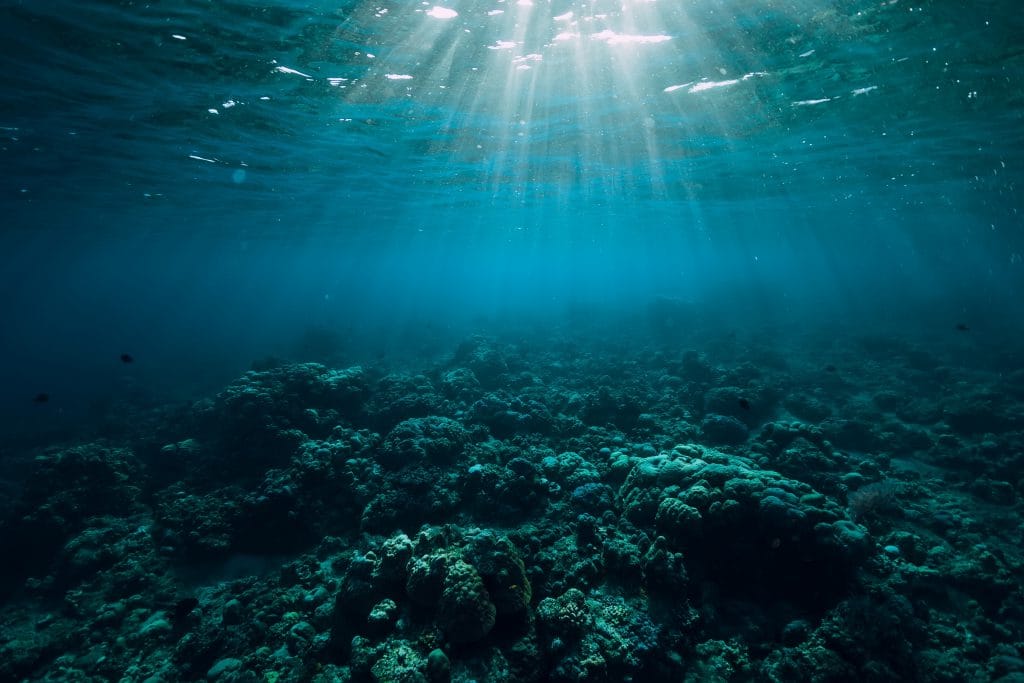Your Mission:
Harness the power of cloud computing to identify and quantify organisms in benthic video transects. Start with pre-built Artificial intelligence (AI) models or take it to the next level by building your own machine learning (aka coding) models.
With those words, the MATE ROV Competition challenged students around the globe to use the Microsoft Azure AI Platform to create computer programs capable of evaluating marine organisms in benthic video transects. This was the second time the MATE ROV Competition and Microsoft partnered on a project designed to expose students to machine learning and encourage them to understand and apply AI to solving real-world, ocean-related problems.
In 2019, the challenge was more free-form, tasking students to innovate on decisions that might be made from ROV information and the machine learning process (data acquisition, transformation, classification, visualization, etc.). Students could use data acquired from their ROV, simulated data for a scenario, or public data sets to, for example, classify aquatic species or analyze fault lines to predict natural disasters.
The 2021 challenge was more specific and involved in-depth learning and applications. It was presented to students in the form of a hackathon with four “rounds” of individual challenges that required students to create programs that analyzed benthic video transects and output data based on specific tasks. Video transects were provided by the Monterey Bay Research Institute (MBARI), NOAA Gray’s Reef National Marine Sanctuary, and Coral Morphologic, a non-profit organization whose mission is to create innovative underwater media that chronicles Earth’s imperiled coral reefs. For each round, students’ submissions were judged on accuracy of their analysis.
For example, for Round 1, students were tasked with developing a program that annotated a video transect collected by MBARI’s ROV Ventana from the Monterey Bay National Marine Sanctuary; the program was to find one benthic species, the grooved tanner crab. Round 2 focused on a video transect collected by SCUBA divers in Gray’s Reef National Marine Sanctuary. Students were challenged to prepare a program that counted how many black sea bass, an important species for both commercial and recreational fisheries and an indicator of ecosystem health, were seen at any one instant during the video. For this round, they had to deliver that program, the resulting graph with fish counts at specific intervals, and explanation of how the program/algorithm counts fish, and a video demonstrating their solution working real time.
Round 3 tasked students with creating a program to identify human-made pollution – trash – as seen in a video segment taken from Coral Morphologic’s Coral City Camera, a stationary underwater camera that provides a 24-hour a day, 7 days a week view of an urban coral habitat along the Port of Miami, Florida. Round 4 also used video from Coral Morphologic, requiring students to develop program to identify five different species of fish seen in live video stream coming from the Coral City Camera. However, unlike previous rounds, the focus was not only on the effectiveness of the students’ programs to identify fish, but also how they packaged their logic to the “customer”, Coral Morphologic. Students were to showcase their product at work, demonstrating how to use the software, and presenting the results of their product identifying certain fish in the form of a “marketing pitch”.
Eight groups of students participated in Round 1, with all eight advancing to Round 2. Out of those eight, seven submitted entries to Round 2, with all seven of those groups advancing to Round 3. Five groups made it to the final round. The top three, which were all students on MATE ROV
Competition teams, were each awarded a Surface Go and keyboard set along with t-shirts courtesy of Microsoft. The top finishers are listed below with links to their marketing pitches.
- 1st Place: Made in Alexandria (MIA), Alexandria University, Alexandria, EGYPT Computer Coding Challenge Round 4(Final Round) – YouTube
- 2nd Place: ROBO-TECH, Alexandria, EGYPT Microsoft/MATE Cloud Computing Competition Round 4 Robo-tech’s Demonstration Video 2021 – YouTube
- 3rd Place: UWROV Team, University of Washington uwrov_presenation_ml_challenge_2021 – YouTube
Planning is underway for the 2022 Machine Learning – Computer Coding Challenge, which will again challenge students around the world to learn and apply AI to addressing ocean issues. To suggest a task related to ocean monitoring and management or for more information, please visit the MATE ROV Competition web site.

